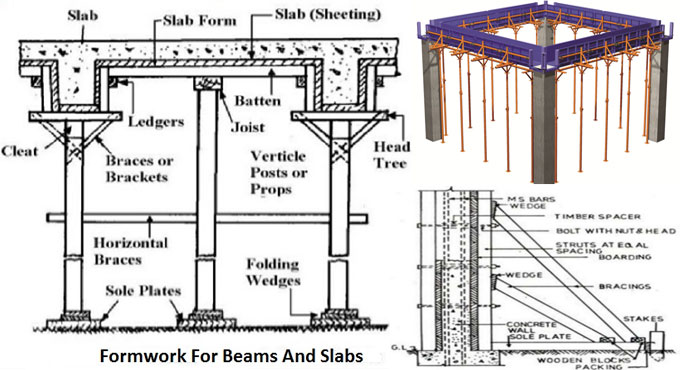NEWS | SOFTWARE | SHEET
Formwork for slabs and beams
Formwork for internal and end beam as well as floors are displayed in representation. Several components of the formwork are displayed in the representation. Dimensions of several components and their operations are specified briefly.
1. Cleats: Cleats are set (sideways) to the beams’ sides. The measurement of the cleat is 100 mm x 30 mm or 100 mm x 20 mm.
2. Beams sheathing side forms are usually 30 mm broad.
3. Battens or Joists: Joists uphold the decking. The dimension of the joists relies upon the centre-to-centre distance of the joists as well as span of the joists. Furthermore, joists are also called battens.
4. Ledgers: Ledgers are flat wooden parts fixed in the cleats. They make the bearing for joists.
5. Bottom Sheathing: It must be formed 50 mm to 70 mm thick for the reason that load is fairly weighty above it.
6. Head Tree: The total of the beam is assisted at a head tree. Furthermore, it is a flat beam associated above the perpendicular shore or post, by means of slanted beams or cleats.
On the base of the vertical shores or posts, wedges or a pair are set above sole parts. Wedges assist in making tighter or somewhat elevating the formwork to create early camber in the formwork.
Furthermore, wedges are taken off at the time of removal / stripping the formwork. Moreover, formwork must not be removed / stripped right away, however must be untied gradually by removing the wedges moderately in stages.
The entire construction joints in floors and beams must be formed in the beam centre third.
Get through the subsequent video lesson to obtain additional information.
Article Source: dailycivil.com


